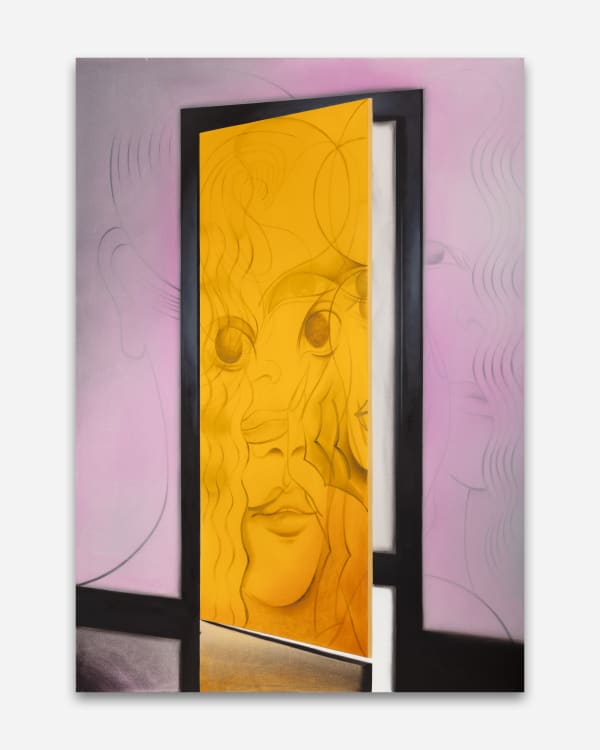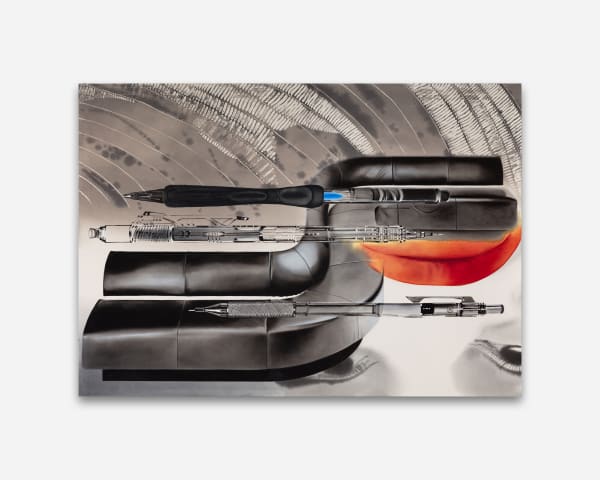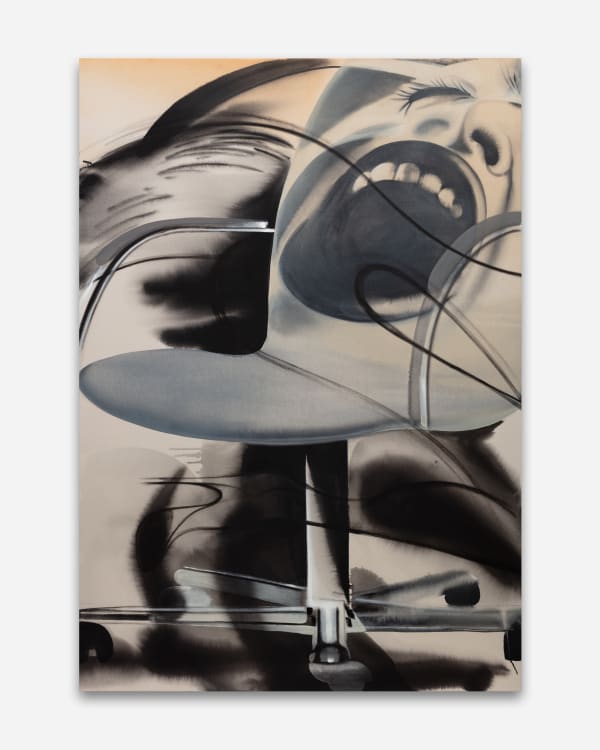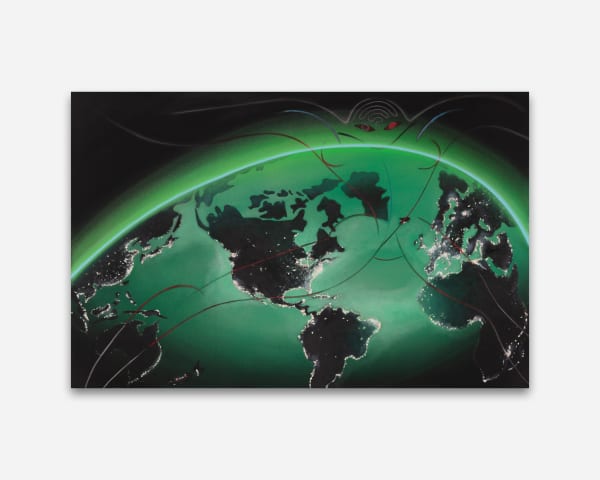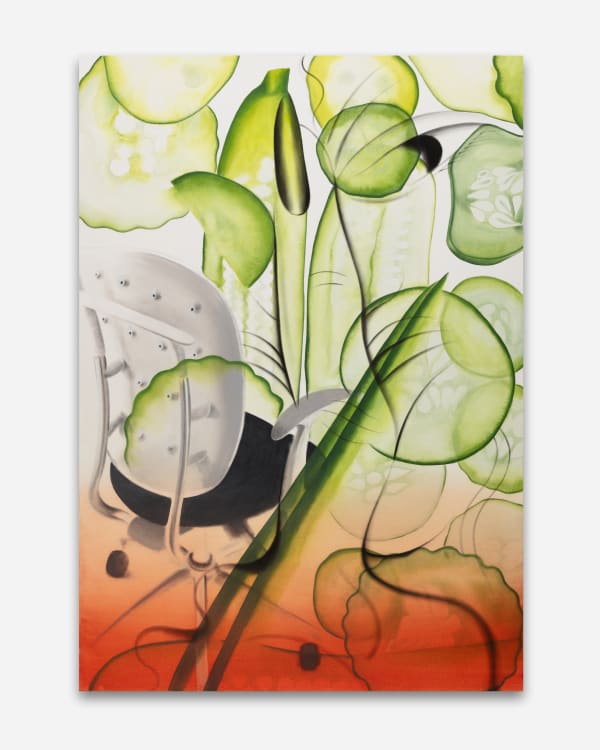办公室幻象: 雅各布·帕金
-
 Jacopo Pagin
Jacopo Pagin
Anthropocene, 2024 -
 Jacopo Pagin
Jacopo Pagin
Technophobic office, 2024 -
 Jacopo Pagin
Jacopo Pagin
Foresee a desire and decide a destiny, 2024 -
 Jacopo Pagin
Jacopo Pagin
Global Safety, 2024 -
 Jacopo Pagin
Jacopo Pagin
Good skin for everyone, 2024 -
 Jacopo Pagin
Jacopo Pagin
Koka, 2024 -
 Jacopo Pagin
Jacopo Pagin
On mute, 2024 -
 Jacopo Pagin
Jacopo Pagin
Pax Aliena, 2024 -
 Jacopo Pagin
Jacopo Pagin
Synchronized and emolliated, 2024 -
 Jacopo Pagin
Jacopo Pagin
Void to void, 2024
办公室幻象:追溯现代集体记忆
Make Room 荣幸呈现现居比利时的意大利艺术家雅各布·帕金(Jacopo Pagin)的第二次个展《办公室幻象》。
在《办公室幻象》这一展览中,艺术家雅各布·帕金追溯了一段刚刚成为历史的文化遗迹。这些作品以办公环境为背景——一个曾经象征着秩序和可控性的乌托邦梦想,试图从办公桌的方寸之地掌控整个世界。帕金 从20世纪90年代至21世纪初的美学中汲取灵感,这些空间曾是西方新自由主义的顶峰——一个被称为“历史终结”的美好幻想,认为在以美国为主导的全球化进程中,世界正朝着单一的繁荣道路前进。然而,如今这些图像显得过时且疲惫,充满了讽刺和怀旧之情,促使我们反思那些曾经憧憬却未能实现的愿景。
《办公室幻象》重新审视了这些权力空间中的建筑细节和设计物品——办公椅、桌子、灯具和门把手,这些曾经象征控制的工具,如今成为了时代褪去光辉后的象征,反映了行政工作和企业文化中诱人却颓废的美学。当帕金重新激活这些环境时,他揭示了其中蕴藏的一种不稳定的承诺,描绘了以进步、效率和控制为中心的世界观中的内在矛盾和脆弱性。
帕金的大型绘画作品描绘了高度拟人化的室内景观,这些景观基于结构化的建筑形式,同时逐渐溶解为充满幻想和心理色彩的领域。丙烯的大面积洗色和油画细节覆盖在从复古设计杂志、广告和扭曲的流行图像中汲取的构图上。透明层的叠加创造出超现实的主体——这些图像在可识别与抽象之间游走,回响着这些曾经充满抱负的环境所带来的舒适与迷茫。帕金的构图邀请观众反思这个企业乌托邦的怀旧魅力,同时强调了理性、有序的世界与隐藏其下的混乱和不可预测力量之间的不协调感。
在作品如《同步与柔化》中,帕金利用透明和拼贴手法,通过叠加过去与现在的瞬间,扭曲了观者对线性时间的感知,呈现出记忆与感知的矛盾,揭示了怀旧与现实之间的张力。办公椅等办公物品被有机、超现实的元素包裹,象征着人类试图严格组织起来的结构化办公空间,最终被自然的、不可控的力量重新占据。这些熟悉而又陌生的物品不仅仅是背景道具,它们被转化为具有象征意味的符号,反映了一种迷失的乌托邦美学——一种关于可控世界的幻象。
展览中反复出现的元素——如镜像的轮廓、反射的形态和重复出现的元素——唤起了过去与现在、内在与外在、可见与不可见之间的对话。帕金常描绘眼睛、面孔与镜面,这些既是字面意义上的观察,也具有隐喻意义——它们代表了“看”与“被看”的双重含义,成为探索精神和心理领域的窗口,挑战现代社会对线性进步的单一叙述。
《办公室幻象》呈现了对西方理想的批判性解读,探讨了这种权力美学的吸引力及其内在的矛盾。通过对集体时间的感知和多元文化的历史反思,帕金的创作并未仅仅停留在个人记忆的层面,而是深入挖掘了集体记忆,揭示了塑造我们历史理解的共同体验。这些熟悉而怀旧的无个性美学,唤起了对曾被认为是美好未来的记忆——如今我们意识到,这些不过是片面权力的虚假和投机产物。通过穿越近代历史的残余,帕金鼓励我们面对进步的虚幻本质及其叙述的局限性,提醒我们:世界、工作、技术与艺术始终交织在一起,而在它们的脆弱性之中,也孕育着新愿景的潜力,以及无数未讲述的故事和对时间本质的持续追问。



